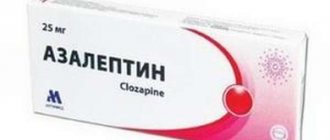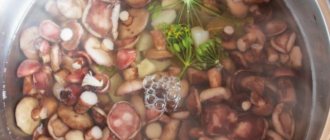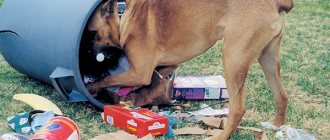December 10, 2019
Experts advise not to wash chicken before cooking. During washing, bacteria that are on the surface of raw chicken spread. They can cause serious health problems. The most common diseases that occur this way are campylobacteriosis and salmonellosis. Few people know that bacteria during the processing of raw chicken can infect even those people who are a meter away from the sink.
Causes of chicken poisoning
Cases of chicken poisoning are classified by doctors as a broad group of food intoxications. Most often, symptoms corresponding to this pathology are presented in the summer, when people go out into nature, where they prepare food on their own, dine in a cafe or buy ready-made meals at various retail outlets. Meat poisoning is also not uncommon during the holidays.
Since chicken meat spoils quite quickly (like any similar product), an increase in the number of poisonings is observed in the summer. It is enough for chicken meat to lie outside the refrigerator for about an hour for its suitability for food to become questionable. During the holidays, the habit of many people to buy food in advance plays a role, which can also lead to spoilage.
If symptoms characteristic of food poisoning appear, it is recommended to immediately contact a specialist.
Food poisoning from chicken meat can occur for several reasons:
- Salmonellosis. This disease occurs when eating meat that was initially contaminated with salmonella. It mainly develops if you taste raw chicken, but infection is also possible if a stale carcass is improperly prepared.
- Staphylococcus. Staphylococcus is a bacterium that infects meat if its storage conditions are not met. Despite the fact that the microorganism dies quite easily, it releases toxins that easily accumulate and are not destroyed even by boiling for two hours at a temperature of 100°C. Thus, poultry that is boiled or otherwise prepared is also dangerous.
- Various foodborne illnesses. Poisoning from grilled chicken, smoked or fried carcass is possible if basic storage rules were not followed, for example, the carcass was in a warm place. After about a few hours of being in an environment full of viruses and bacteria, even ready-to-eat poultry will become dangerous to humans.
- Supplements Sometimes manufacturers add antibiotics and other substances to the product that promote growth and disease resistance. These fillers can both lead to intoxication and provoke allergies. In most cases, not only boiled poultry, but also poultry prepared in any other way will pose a danger.
General Safety Tips
You can't tell if your pork is infested with Trichinella or pork tapeworms just by looking at it because these larvae are microscopic in size. Therefore, the best protection against trichinosis is thorough cooking of pork.
Trichinella die at a temperature of 58°C, and tapeworm eggs and larvae die at a temperature of 50–65°C (, ,).
One study found that pork tapeworm eggs and larvae can be killed at a lower temperature of 50°C in roasts that bake for 15 to 20 minutes, but higher temperatures of over 65°C are required when cooking ground pork dishes (, ).
Experts recommend cooking pork until its internal temperature reaches 63°C when cooking chops, steaks and pork tenderloin. Cook ground pork, processed meats or meat mixtures until the internal temperature reaches at least 71°C (71°C).
Whether it's pork or minced meat, you should let the meat rest for 3 minutes before eating it. This allows the meat to continue to cook and raise the temperature.
When cooked to 63°C, you may notice that white meat has a pink tint when you cut into it. According to revised USDA guidelines, this is acceptable.
To measure the temperature of your meat you must use a calibrated thermometer and follow the manufacturer's recommendations.
Proper food processing is also very important. This means that hand washing is a must when preparing food, as is using clean drinking water to wash surfaces, utensils or utensils.
Conclusion:
Cooking pork to a safe temperature is essential to avoid contamination. Although pork tenderloin, chops and steaks should be cooked to 63°C, ground pork should reach at least 71°C. Let the meat rest for 3 minutes before eating.
Symptoms
Chicken poisoning usually does not take long to occur. On average, it takes from 1 to 4 hours from eating the product until symptoms appear. The first signs of chicken poisoning are abdominal discomfort, belching and bouts of nausea. The following symptoms may gradually appear:
- severe diarrhea (the stool will be foul-smelling, liquid, and may be foamy and greenish in color);
- there will be complaints of severe cramping pain in the abdomen, which will subside for a while after defecation;
- there will be severe vomiting;
- possible rise in body temperature;
- There may be complaints of headaches or muscle pain;
- Fatigue, drowsiness will develop, appetite will decrease or disappear altogether.
Symptoms of chicken poisoning, if the patient is not treated in a timely manner, may progress:
- severe dryness of the skin and mucous membranes will appear;
- the person will feel very thirsty;
- blood pressure will decrease, which will lead to tachycardia;
- urine will acquire a rich dark color;
- the amount of urine excreted decreases (decreased diuresis).
Poisoning poses the greatest danger to children and women during pregnancy, since their resistance to pathogenic microorganisms is sharply reduced.
Chicken meat from the store is injected with weight gain gel
The gel for inflating carcasses is prepared from a powder that contains the bioadditive E452. It is also included in detergents. The gel is pumped into chicken meat, it is added when making ham and sausage, and even gourmet foods and semi-finished meat products. At the same time, the powder contains toxic elements: up to 2 mg per kg of lead powder, up to 3 mg of arsenic and up to 1 mg of mercury.
The gel is obtained by diluting 45 g of powder and 40 g of salt in 300 ml of water. This is what it looks like:
Then all that remains is to inflate the carcass with a special syringe. Here's a regular chicken before:
And here is a plump chicken, the likes of which do not exist in nature, pumped up:
First Aid Basics
In case of chicken meat poisoning, you can try to provide first aid to a child or adult at home. All activities are aimed at removing toxins from the body.
First of all, gastric lavage is performed. This is done with a large amount of water or a weak, pale pink solution of potassium permanganate. The patient is given a solution to drink, and then vomiting is induced by pressing on the root of the tongue. The procedure can be repeated several times until the rinsing waters become clear.
This method cannot be used to cleanse the body of a very small child or an unconscious person!
In case of chicken poisoning, it is recommended to remove toxins naturally, using activated carbon. A suspension is prepared from it by adding the powder to plain water, after which the resulting mixture is given to the victim to drink. The suspension is prepared at the rate of 1 tablet per 10 kg of body weight.
What happens if you eat undercooked or raw chicken?
What does undercooked chicken mean? This is when the outside has a ruddy, appetizing crust, and when you break a piece, pink ichor juice flows out, the bone is also reddish in color. In fact, there is reason to consider such a product to be considered raw inside, because it is in this liquid with ichor, which is not brought to 100°C, that pathogenic microorganisms are concentrated.
As for raw chicken, its consumption is unacceptable. This is a product potentially contaminated with hundreds of thousands of bacteria, and such a raw food diet will not leave its mark on the body.
When do you need medical help and how is therapy carried out?
You can become so poisoned by simple chicken that you will need medical intervention. It is necessary to contact specialists if:
- people were poisoned more than two days ago and the symptoms still have not disappeared;
- you need to treat a small child, an elderly person or a pregnant woman;
- signs characteristic of dehydration have appeared and are gradually increasing.
Treatment will be determined by the doctor, depending on the symptoms and characteristics of the disease. The basis of therapy is antibiotics, which are prescribed after bacteriological examination of feces or vomit, identification of the pathogen and determination of its sensitivity to antimicrobial drugs.
Additionally, detoxification therapy is carried out in the hospital. If necessary, drugs of other groups are prescribed to eliminate the symptoms that appear.
Chicken meat from the store is the cheapest, but also the most harmful.
To ensure that chicken fillet is inexpensive, the manufacturer uses the cheapest feed and takes measures to ensure that the chicken grows as quickly as possible. At the same time, there is no talk about the health of the chicken itself, so products containing GMOs and drugs that accelerate the bird’s weight gain are used in full.
They feed chickens not only with hormones, but also with antibiotics (so that they don’t get sick). And a person who consumes such meat eventually becomes insensitive to antibiotics, and an allergy may develop. These antibiotics kill beneficial bacteria in the human intestines, which in turn leads to dysbiosis and disruption of the gastrointestinal tract.
A chicken ready for slaughter in a month and a half may become blind by this time; many specimens are only able to lie down, because they cannot walk. The buyer chooses cheaper meat, but doesn’t even think about what quality it is.
Possible complications
If the patient receives timely assistance, chicken intoxication will not cause any negative consequences. In the first few days after recovery, unstable stools may persist, but if you follow a diet, they will quickly normalize.
The danger is dehydration. If help is provided to a patient with his symptoms untimely or not at all, damage to all organs and systems occurs. For children, who tend to quickly fall into hypovolemic shock leading to kidney failure, dehydration is especially dangerous.
There are practically no vitamins and nutrients in chicken meat from the store.
If anyone thinks that white chicken meat contains large quantities of potassium, magnesium and iron, they are very mistaken. If you check even domestic corydalis, the content of these elements in their meat will be only from 5 to 7 percent of the norm required by the human body per day. Boiled potatoes contain 5 times more potassium than a portioned piece of breast. In addition, store-bought breast meat contains virtually no minerals.
As for vitamins, it’s even worse. Compared to the benefits of fruits, chicken meat contains an insignificant amount of vitamins.
White chicken meat contains only vitamin B3 (60% of the daily requirement) and vitamin B6 (only 30% of the required daily requirement). But any porridge contains much more of these vitamins.
Preventive actions
Chicken intoxication is very easy to prevent if you follow a number of simple rules. These include:
- the habit of buying meat only in good stores;
- regularly rinse raw meat under running water before cooking;
- long-term heat treatment until traces of blood completely disappear from the piece;
- compliance with the rules for storing chicken dishes (no more than 48 hours in the refrigerator in a sealed container).
Poisoning from stale or contaminated chicken meat is regularly encountered in medical practice. To avoid this, you need to remember basic safety rules. If intoxication does occur, it is necessary to provide the patient with first aid as soon as possible and consult a doctor!
There are hidden health hazards in store-bought chicken
If a person leads a healthy lifestyle and is worried about proper nutrition, then, first of all, he should ask what they feed chickens on a poultry farm so that they gain weight in 6-7 weeks, which a domestic chicken will gain in at least six months.
In chicken meat from the store, various bacteria find a very suitable habitat - better than in beef or pork meat. For this reason, the cutting board for chicken meat should be strictly separate; cutting fruits, for example, is strictly not recommended on it. And after handling chicken meat, hands should be washed with bactericidal soap.
Such warnings are associated with the conditions in which chickens are often kept in poultry farms. They are literally crammed into cages, causing them to be smeared from head to toe in their own feces.
When chickens are slaughtered and the carcasses are cut up, feces, albeit in small quantities, inevitably end up on the chicken meat. For this reason, industrial chicken is disinfected with chlorine and other toxic gases.
How do you treat domestic chickens for tuberculosis?
Domestic chicken is not treated for tuberculosis due to economic infeasibility. Rare breeds of birds are treated with antibiotics. The course of treatment will last at least 1.5 years.
Leaving a sick chicken behind risks infecting the entire flock
The sick chicken must be destroyed, the chicken coop must be disinfected, and for the rest of the flock a tuberculin test must be carried out to identify sick birds. During the disinfection of the chicken coop, the birds must be moved to another room, since the fumes of some drugs, including lime, can be toxic to living organisms.
Diagnosis of the disease
It is very difficult to reliably diagnose coccidiosis during examination. Even the appearance of oocysts in the feces cannot tell for sure about the disease, since parasite eggs are constantly present in different concentrations in the intestines of chickens.
The examination requires a microscopic analysis of the droppings and scraping of the mucous membrane from the cloaca. In the event of the death of several birds from the population, the intestines are examined pathologically - it looks inflamed, red, swollen, has white and yellow nodules, and a lot of fluid inside.
How to treat coccidiosis is determined after confirmation of the diagnosis. There are many drugs available, their choice depends on the type of pathogen.
Even the appearance of oocysts and blood in the stool cannot tell for sure about the disease.
Characteristics of the disease
Coccidiosis is otherwise called eimeriosis. The causative agents are protozoan microorganisms from the genus Eimeria. Most often, Eimeria tenella, which are known as Coccidia, contribute to protozoan infection. Infection with Eimeria necatrix, akervulina and maxima is also common in chickens.
Coccidiosis is the leading parasitic disease in poultry farming.
The oocyst (infectious form of Eimeria) is a thick-walled zygote. In this regard, the microorganism is very tenacious even in harsh conditions. When the oocyst walls enter the stomach, they are destroyed by bile. The released infestations colonize the intestines within the next 8 hours. Coccidia contribute to the destruction of the epithelium of the small and duodenal intestines, which greatly reduces the body's immunity and makes it vulnerable to other bacteria.
Video
Diseases of laying hens:
Attention, TODAY only!
GuruAnimal.ru » Question/answer » Why do laying hens die?
Littleone 2009-2012 > Hobbies and interests > Cooking > Calm down, we had raw chicken for lunch...
View full version: Calm down, we had raw chicken for lunch...
We decided to try a new recipe, put a lemon inside the chicken (2 kg), placed it in a baking sleeve, which was opened at the top and placed it in the oven set to 180-200 for an hour, then we looked like it was not yet golden brown, cut it and left it in the oven for another 20 minutes, then they tried to cut it, it was easy to cut, the juice flowed out clear, and when they began to eat it, there was blood near the bones, so thin, but bright red, it turns out it was raw inside... Can we all wrap ourselves in a sheet and crawl away? The children ate too:001:
Nothing will happen. It’s a normal situation. :)) For peace of mind, drink 100 grams of vodka. :))
Nothing will happen. It’s a normal situation. :)) For peace of mind, drink 100 grams of vodka. :))
Further tactics for patient management
Doctors from the ambulance team, after examining the patient and collecting anamnesis, will decide whether the poisoned patient needs to be hospitalized or not. In the case of a serious condition of the patient, severe dehydration, impaired consciousness, hospitalization in a hospital in the infectious diseases or intensive care unit is necessary. In case of poisoning by poisonous fish, treatment is carried out in a toxicology hospital.
Treatment of coccidiosis with drugs
Coccidiosis is poorly treatable with parasitic drugs. Previously, they resorted to therapy with Furazolidone or Norsulfazole in food, and at the same time they added Furacilin to drink (5 g per day).
Furazolidone is often used to treat coccidiosis.
Modern pharmacology offers other coccidiostatics. They are divided into chemical and ionophores. According to veterinarians, the best drugs for the problem are offered by the chemical sector.
Chemicals
They are used directly for treatment. Prevention with such means is recommended only for disadvantaged farms, since the formation of immunity to the pathogen does not occur with such therapy.
The group includes drugs based on amprolium, diclazuril, robenidine, nicarbazine, totlazuril. They are taken in liquid forms and soldered with water. Chemical therapy is toxic; it destroys the very structure of the parasite. The dose must not be exceeded.
Ionophores
They work softly and have a cumulative effect. Suitable for the prevention and subacute forms of coccidiosis. These include medications such as salinomycin, narasin, lasalocid, monensin.
Important. Violation of dosages leads to depression of chickens and a decrease in their nutritional functions.
Review of drugs
Coccidiostats may have different names from different companies.
Solikoks is one of the most popular coccidiostats among poultry farmers.
The brands that have proven themselves to be the best are:
- Biovet, Huvefarma – Bulgaria;
- Bayer - Germany;
- Vetbiohim – Russia;
- Krka – Slovenia;
- Biopharm – Ukraine.
In first place in demand are salinomycin preparations Bio-cox (12% granule), Koktsisan, Salinopharm (12%) and Sakox (12%).
Disease prevention
Coccidiosis is easier to prevent than to eliminate. To prevent pathogens from being able to multiply favorably in the gastrointestinal tract of chickens, sanitary standards in the poultry house must be observed. Preventive measures must be regular, otherwise Eimeria will accelerate its life activity, and the disease cannot be avoided.
Prevention of coccidiosis involves keeping the chicken coop and run clean.
The list of necessary activities is as follows:
- Cleaning drinking bowls, feed containers, bedding, walls and floors of the nursery - 2 times a week; removing food from feeders after each meal.
- Cleaning the walking area at least once a week.
- The resettlement of birds of different ages, since their immunity is different.
- Choosing food with a high percentage of vitamins and minerals to build and maintain immunity.
- Always keep a bowl of gravel, shell rock, chalk and salt in the chicken coop.
- Timely vaccinations, periodic vaccinations according to the veterinary regimen.
It is also important to avoid crowding in the nursery and give the flock more space. Crowded conditions promote rapid dispersal of coccidiosis pathogens within the flock.
In the video, a farmer talks about the treatment and prevention of coccidiosis in chickens using the drug Solicox.
Signs of stale chicken
The signs of spoiled chicken are very varied; if there is even the slightest suspicion that the quality of the product is poor, then under no circumstances should you buy it. The following points should be of concern:
- Broken packaging - if the chicken has been left in the air for a long time, this increases the chance of infection with microorganisms.
- The chicken smells a little - this is a consequence of the fact that decomposition processes have already begun in the meat, during which a large number of microbes and their decay products are released.
- Atypical color – high-quality chicken meat should be soft pink, shiny and elastic in appearance . If the color of the chicken is blue or gray, this is the first sign of stale products.
- Sticky meat – if the chicken is sticky, it means it has been sitting in a warm place for a long time. No amount of washing in running water can correct the situation; many microbes will remain in the chicken.
- Chicken smells like bleach - a sign that enterprising sellers soaked the meat in chlorinated water to get rid of the stale smell. Such meat is doubly dangerous; in addition to the risk of getting an intestinal infection, the risk of chlorine poisoning is added .
It is strictly not recommended to use such products as food! It must be remembered that saving in certain cases leads to dire consequences.
Treatment at home
Treatment with folk remedies for parasitic infections is not typical. Coccidiosis is no exception. Herbs and nutritional supplements have no effect. Home remedies for protozoal infections include only Levomecitin. Many farmers testify to good results from this drug, but veterinarians do not recognize it as a treatment method.
Levomethicin in powder form is sold in pet pharmacies. It is mixed into the food according to the instructions 2-3 times a day.
Chicken coccidiosis: treatment with iodine
For young animals and laying hens, it is recommended to replace Levomecitin with iodine. It is given as a solution in the morning before feeding. Iodine is diluted with water to a concentration of 0.01%. 2 ml per head is soldered until the 40th day of life, 5 ml per head - from 40 to 60 days.
Diagnostics and pathological changes
Veterinarians can confirm or refute the diagnosis during a laboratory examination of a sick bird, and the sooner it is carried out, the greater the chance of preventing the disease from spreading to the entire flock.
The primary diagnosis is established by external signs of the disease, as well as by the results of identifying acid-fast bacterial cells in smears.
An intradermal tuberculin test is used for mass diagnostics of the herd. The test is done on open areas of the body - comb, earrings. The weakened Mycobacterium avium allergen is administered intradermally.
If the inflammatory process begins and the earring increases in size, this means that the reaction to the pathogen is positive, which indicates contact with the bacterium. If infection did not occur at the time of contact, then a repeat tuberculin test a month later will give a negative result.
When opening the carcass of a dead chicken, granulomas will certainly be found on the affected organs. But they can easily be confused with cancer, and to confirm the diagnosis, an analysis is needed to detect acid-fast bacterial cells.
Dietary product to protect health
Typically, the presented meat is recommended to be included in the diet of people who suffer from disorders of the digestive system. Since the product belongs to the dietary category, even those who want to lose weight are allowed to eat it. There is an extremely low amount of fat here, so eating this delicacy will not bring any noticeable negative consequences for your figure.
But the rule only works if you consume domestic chicken or farm chicken that has not been exposed to antibiotics or other additives that affect the well-being of the end consumer.
Good meat will delight you with its high content of microelements necessary for normal life:
- B vitamins,
- phosphorus,
- copper,
- iron,
- calcium,
- selenium,
- magnesium
Another significant advantage of dishes made from such a base is their relative cheapness compared to more expensive beef, pork, and rabbit meat.
Tuberculosis in chickens: reviews
. Poultry suffers from tuberculosis at the age of 12 months and older. . When mycobacteria enter the body, primary grayish-white or yellowish-white nodules are formed, most often in the ileocecal joint of the intestine and in the liver, less often in the spleen and very rarely in other organs.
Still, it doesn’t look like tuberculosis. But there are many viral respiratory diseases similar to your case. When the trachea and lungs are affected. Often in these cases, the nose and trachea are clogged with mucus. Yours don't have this?
Coccidiosis is the leading parasitic disease in poultry farming. Geese, turkeys, ducks and other birds are susceptible to the problem. But chickens suffer the most. It is in chickens that infection occurs en masse and most often. The problem causes farmers a lot of inconvenience, so the topic is always relevant.











